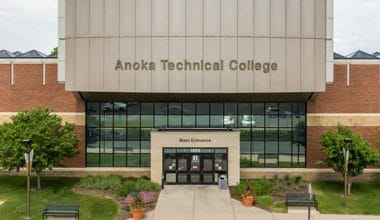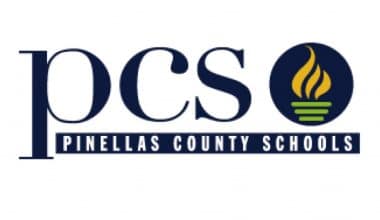The National Academies of Science, Engineering, and Medicine was founded in 1863. It is also known as NASEM or the National Academies.
NASEM is a not-for-profit, non-governmental organization that provides gives professional advice on some of the challenging issues in science, engineering, and medicine for the benefit of the US and the world.
The National Academies is made up of the National Academy of Sciences, National Academy of Engineering, and National Academy of Medicine which are honorary membership organizations. Each has its own governing body and each one elects its members.
The members of the National Academies are over 6,300 scientists, engineers, and health experts.
In this article, I’ll be giving you a detailed review of the National Academies, its programs, membership, fellowship programs, and why reasons why you should go to NASEM, and a lot more.
At the National Academies of Science, Engineering, and Medicine, fellowship programs are offered to not only graduate students but also professionals and scholars interested in doing research projects at the academies.
Check Out: California Academy Of Mathematics And Science Review | 2022
What Is The National Academies Of Science, Engineering, and Medicine?
The National Academies of Science, Engineering, and Medicine also known as NASEM or the National Academies is the collective scientific national academy of the United States of America.
It is a not-for-profit, non-governmental organization that provides independent, aim advice to enable progress and advance science, engineering, and medicine.
Equally, the institute provides professional advice on some of the most challenging issues for the benefit of the globe.
Read Also: Natural Sciences and Engineering Research Council of Canada 2022
Why Attend The National Academies of Science, Engineering, and Medicine?
If you’re interested in advancing your education beyond the university and you’d love to get hands-on experience working on real-life projects then NASEM is your best option. You’ll have time to participate in different major projects for the nation and the world.
At the National Academies of Science, Engineering, and Medicine, you’ll be working alongside experts in the fields of science, engineering, and medicine to formulate policies and find solutions to challenging issues for the benefit of the world.
Various opportunities exist at the National Academies such as:
1. Careers
NASEM’s allows you to showcase your talent by supporting and helping them fulfill their goals of providing independent and objective advice to society.
The organization has various featured career prospects on its site which you can check out.
2. Fellowships and Grants
The National Academies offers various fellowships in science, engineering, and medicine to both graduate students and experts.
The fellowship includes Early Career Fellowships, Middle to Late Career Fellowships, and Grants.
3. Volunteers
The National Academies of Science and Engineering also get volunteers each year from the three fields.
These experts dedicate their time and knowledge to conduct the academy’s policy studies, workshops, symposia, and other events.
You can volunteer as well because you’ll not only gain more exposure but also get connected to top professionals in various fields.
Another beautiful benefit of the National Academies is that anyone can attend and also become a member, there’s no age limit so long as you can gainfully contribute to the growth of the organization.
The organization has earned and maintained its prestigious reputation as the country’s premier source of independent, professional opinion on scientific, engineering, and medical issues.
Related Articles: American University of Beirut Graduate Scholarship in Health Science 2022/2023
Who Funds the Advisory Board of the National Academies of Science, Engineering, and Medicine?
The Advisory Board of the National Academies of Science, Engineering, and Medicine gets funds from different sponsors.
They don’t get funds or direct income from the federal government, rather their income comes from grants and contracts of federal agencies and private resources.
The National Academies don’t compete for federal contracts, it gets its revenue from individuals, States, foundations, and other sources.
Is the National Academies of Medicine the same as the Institute of Medicine?
Yes, the National Academies of Medicine is the same as the Institute of Medicine. The National Academies of Science voted to change the name of the Institute of Medicine to the National Academies of Medicine and this was effective from July, 1st 2015 as part of a broader internal organization.
The National Academies of Medicine is a branch of the National Academies that provides national and international advice on issues like medicine, health, biomedical science, and health policies.
What is the Acceptance Rate of the National Academies of Science, Engineering, and Medicine?
NASEM doesn’t accept students directly by granting admission, nor do they have faculties or campuses because it is not an institution.
However, it grants membership to students and experts who’re interested in offering their expertise in research projects for any of the academies.
The National Academies of Science, Engineering, and Medicine accepts and elects members by the recognition of their distinguished and continuous achievements in original research.
There’s no application process for becoming a member because they’re mostly selected through an election. A lot of people submit their names informally, but only the Academic members have the right to submit names for nomination formally.
After a careful examination of each nominee, an extensive and careful vetting process is carried out to select members. Only a maximum of 120 people get selected each year and they must be US citizens, noncitizens are considered as International members and they must not exceed 30 each year.
What are the Functions of the National Academies of Science, Engineering, and Medicine?
The main function of the National Academies of Science, Engineering, and Medicine is to advise the nation.
They provide independent, objective advice to inform policies with evidence, promote progress and innovation, as well as handle difficult problems for the good of society.
They employ the best knowledge and professionals from different disciplines to study challenging and contentious issues, generate ideas based on evidence gathered, and identify the best approach to use.
The National Academies honor excellence in science, engineering, and medicine, and find ways to improve these fields.
The National Academies collaborate with colleagues from around the world to encourage International discussions on issues that cut across international boundaries.
Is the National Academies of Science, Engineering, and Medicine Peer Reviewed?
Yes, reports and publications of the National Academies of Science, Engineering, and Medicine are peer-reviewed and approved by the organization. One of the prestigious peer-reviewed journals that is part of NASEM is PNAS.
Proceedings of the National Academy of Science is one of the world’s most cities and comprehensive multidisciplinary scientific journals, publishing over 3,000 research papers yearly.
How Much is the Tuition Fee of the National Academies of Science, Engineering, and Medicine?
Since the National Academies of Science, Engineering, and Medicine is not an institution that accepts students directly for any course of study, they don’t have any tuition fees that you’re expected to pay.
Most of its members are professionals or graduate students from other educational institutions who are interested in pursuing pre-doctorate, post-doctorate, or dissertation award programs.
Which Programs are Offered at the National Academies of Science, Engineering, and Medicine?
The National Academies of Science, Engineering, and Medicine conducts its research and projects through seven major programs.
These program divisions also have some units under them. They include:
- Division of Behavioral and Social Sciences and Education
- Division on Earth and Life Study
- Gulf Research Program
- Division on Engineering and Physical Sciences
- Health and Medicine Division
- Policy and Global Affairs Division
- Transportation Research Board
I’m going to be explaining each of them and also mention some units under them.
This program division’s objective is to advance the frontiers of behavioral and social sciences and education and how they could be applied to public policies.
Some units under this program division include:
- Board on Behavioral, Cognitive, and Sensory Science (BBCSS)
- Various projects by this board include, community interventions to prevent veteran suicide,
- Board on Children, Youths, and Families (joint with the Health and Medicine Division) (BCYF)
- Board on Environmental Change and Society (BECS)
- Committee on Law and Justice (CLAJ)
- Board on Human-Systems Integration (BOHSI)
- Board on Science Education (BOSE)
- Committee on National Statistics (CNSTAT)
- Board on Testing and Assessment (BOTA)
- Committee on Population (CPOP)
2. Division on Earth and Life
Focuses on various activities where policy meets the life sciences, including the environment, laboratory animal use, geography, and natural resource problems. Units under this program division are:
- Board on Agriculture and Natural Resources (BANR)
- Board on Atmospheric Science and Climate (BASC)
- Institute For Laboratory Animal Research (ILAR)
- Board on Chemical Sciences and Technology (BCST)
- Board on Earth Sciences and Resources (BESR)
- Nuclear and Radiation Studies Board (NRSB)
- Board on Environmental Studies and Toxicology (BEST)
- Board on Life Sciences (BLS)
- Ocean Studies Board (OSB)
- Polar Research Board (PRB)
- Water Science and Technology Board (WSTB)
3. Division on Engineering and Physical Sciences
Works on government missions in defense, aerospace, and space. They also handle natural Infrastructure challenges, science and engineering disciplines, and continuous assessment of research programs and federal labs.
- Board on Army Research and Development (BOARD)
- Board on Energy and Environmental System (BEES)
- Aeronautic and Space Engineering Board (ASEB)
- Board on Infrastructure and Constructed Environment (BICE)
- Board on Mathematical Science and Analytics (BMSA)
- Air Force Studies Board (AFSB)
- Board on Physics and Astronomy (BPA)
- Computer Science and Telecommunication Board (CSTB)
- Intelligence Community Studies Board (ICSB)
- Laboratory Assessment Board (LAB)
- National Minerals and Manufacturing Board (NMMB)
- National Studies Board (NSB)
- Space Studies Board (SSB)
4. Gulf Research Program
This program division focuses on the improvement of human health, environmental protection, and the safety of oil systems in the Gulf of Mexico. Units in this program include:
- Gulf Environmental Protection and Stewardship Board (GEPS)
- Gulf Health and Resilience Board (GHRB)
- Board on Gulf Education and Engagement. (BGEE)
- Gulf Offshore Energy Safety Board (GOES)
5. Health and Medicine Division
The Health and Medicine Division of NASEM finds out issues in medical research, education, health care, and examines policy matters relating to health care and public health.
The units under this program are:
- Board on Children, Youths, and Families (BCYF), (joint with the Division of Behavioral and Social Sciences and Education).
- Board on Global Health (BGH)
- Food and Nutrition Board (FNB)
- Board on Health Care Services (HCS)
- Board on Health Science Policies (HSP)
6. Policy and Global Affairs Division
Focuses on the improvement of S&T public policy, understanding, and education, particularly about national strategies and resources, workforce, International affairs, and the economy.
Units under this program include:
- Board on Higher Education and Workforce.
- Board on International Scientific Organizations
- Committee on Human Rights.
- Board on Research Data and Information.
- Board on Science, Technology, and Economic Policy.
- Committee on International Security and Arms Control.
- Committee on Science, Technology, Medicine, and Public Policy
- Fellowships Office
- Committee on Women in Science, Engineering, and Medicine.
- Committee on Science, Technology, and Law.
- Government-University-Industry Research Roundtable.
- Resilient America Program.
- Science and Technology Sustainability.
7. Transportation Research Board
Helps in providing leadership in transportation innovation and development through research and information exchange. The program unit includes:
- Consensus and Advisory Studies
- Cooperative Research Programs
- Technical Activities
- Annual Meetings and Conference Questions
- Affiliates and Sponsors
- Media
- MyTRB
- Book Store
Fellowships and Grants
The National Academies offers various fellowships and Grants in Science, Engineering, and Medicine to graduate students and professionals. The fellowship program is categorized into two:
Early Career Fellowships
The Early Career Fellowships has the following programs:
Air Force Science and Technology Program
The nationally competitive program is available for postdoctoral and senior scientists to work on research projects together with scientists and engineers at the Air Force Research Laboratory, the Air Force Institute of Technology, or the US Air Force Academy.
ARL Distinguished Postdoctoral Fellowships Program
These are postdoctoral fellowship programs available for outstanding young researchers it offers the recipient the opportunity to pursue independent research of their choosing that supports the mission of the Army Research Laboratory.
America Board of Emergency Medicine (ABEM) Fellowship
Provides early-career health science professionals with the opportunity to experience and participate in evidence-based health care or public health studies that enhance the care and access to care of patients in the domestic and global health care system.
Christine Mirzayan Science and Technology Policy Graduate Fellowship Program
This program is specifically designed to engage graduate science, engineering, law, business, medical, and veterinary students in the analysis and creation of science and technology policy, as well as to familiarize them with the interactions of science, technology, and the government.
Ford Foundation Fellowship Program
Pre-doctorate, dissertation, and post-doctorate certificates are awarded to people committed to a career in teaching and research at the college or university level in the USA.
Ford Foundation Senior Fellowship
This is to provide funding for selected Ford fellows to conduct Innovative research that addresses the overall mission of ‘moving the Ford Foundation Forward’.
Gilbert S. Omenn Anniversary Fellowship
This fellowship aims to allow talented, early career professionals in biomedical science and population health to practice actively in the study process, promoting the linkage of public health and medicine.
Greenwall Fellowship in Bioethics
This fellowship enables young investigators to fully participate in the academy’s projects and to promote their careers as future leaders addressing bioethics challenges in biomedical research, clinical care, and public policy.
Gulf Research Program Funding Opportunities
This program offers various fellowship and grant opportunities to support the program’s 30-years mission to improve oil system safety and the protection of human health and the environment in the Gulf of Mexico.
Middle-To-Late Career Fellowships
Distinguished Nurse Scholar-In-Resident Program
Every year an outstanding senior nurse scholar is selected to come to Washington, DC to participate in a one-year program of orientation and work at the National Academies to play an important part in health policy development at the national academies.
FDA Tobacco Regulatory Science Fellowship Program
The 12-month multidisciplinary residential program is designed for mid-career scholars to gain more knowledge and experience to further define and develop the field of regulatory science as it relates to the regulation of tobacco products.
Jefferson Science Fellows Program
These are fellowships granted to tenured academic scientists, engineers, and physicians from the U.S Institution of higher learning.
Fellows doing this program spend a year at the US Department of States or the US Agency for International Development as science advisers on foreign issues.
NRC Research Associateship Program (RAP)
Postdoctoral and senior research awards are solely sponsored by 20 federal laboratories at more than 100 locations in the USA and worldwide.
These awards grant the opportunity to highly qualified scientists and engineers to apply their skills and talents to research projects that are beneficial to them and the laboratories. These awards are nationally competitive.
Robert Wood Johnson Foundation Health Policy Fellows Program
This fellowship program provides the best opportunity for talented mid-career health, social sciences, and behavioral professionals with an interest in health care policy, health, and promoting the health of the nation.
Grants
The grants provided by the National Academies of Science, Engineering, and Medicine includes:
- Arab-American Frontiers of Science, Engineering, and Medicine.
- Gulf Research Program Grant Opportunities.
- Partnerships for Enhanced Engagement in Research (PEER).
- Parkistan-US Science and Technology Cooperation Program.
- US-Egypt Science and Technology Joint Fund.
How Can I Get into the National Academies of Science, Engineering, and Medicine?
The National Academies of Science, Engineering, and Medicine is not an educational institution therefore they don’t give out application forms. Most of its members are nominated and elected. Becoming a member of NASEM is based on the following:
- You must have distinguished professional achievements in the fields of Science, Engineering, and Medicine.
- Consistent involvement and dedication with issues and challenges related to Science, Engineering, and Medicine.
- Skills and resources that will enhance the growth, achievement, and success of the Academy’s mission and goals.
- Willingness to become an active member of the academy.
Though NASEM is the nation’s research organization, it also accepts graduate students and professionals who are interested in doing one of its fellowship programs either for the pre-doctorate, dissertation, or post-doctorate awards.
If you’re interested in taking part in one of their fellowship programs then you should follow these steps:
- Ensure you have a Ph.D. or Sc.D in any of the science courses.
- Go through the various fellowships and Grants offered by NASEM and select the option that best suits you.
- Each fellowship program has its eligibility guidelines and application process.
- Read the eligibility guidelines and if you’re satisfied with the terms you can then go ahead to apply.
- Each fellowship has an application deadline which you will see when you click on them.
How is Student Life at The National Academies of Science, Engineering, and Medicine?
AtNASEM, fellows who get accepted to one of the fellowship programs usually partake in major research projects that will improve their skills and also be of benefit to the nation.
The National Academies of Science, Engineering, and Medicine has some benefits attached to their fellowship programs such as stipends, paid relocation, health insurance, and professional travel allowance, though not all the fellowship programs come with benefits.
Asides from the well-equipped research center at the organization, NASEM also partners with some of the nation’s best laboratories to carry out some research work.
The National Academies provides their members and fellows with the best opportunity to work on research works that are beneficial to the nation. Not only will you be able to learn new skills but you’ll also develop your talents and work alongside other professionals and scholars. It is a great opportunity to build the right connection in your field. So be prepared to come dedicated and ready to sacrifice your time.
You can get comprehensive information about this organization at the National Academies Official link
Conclusion
This article contains detailed information about the National Academies of Science and Engineering. So carefully go through it because it will serve as a guide if you’re interested in becoming a member or fellow of NASEM.
It will guide you on how to become a member or get a fellowship program award at the National Academies.
References
- https://en.m.wikipedia.org/wiki/National_Academies_of_Sciences,_Engineering,_and_Medicine
- https://www.nationalacademies.org/home
- https://www.nationalacademies.org/about
- https://www.nationalacademies.org/our-work
- https://www.nationalacademies.org/opportunities
- https://www.nationalacademies.org/fellowships-and-grants





